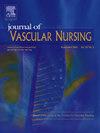The transitional care from hospital to home for stroke survivors and their caregivers: A systematic review
IF 1.2
Q3 NURSING
引用次数: 0
Abstract
Purpose
To describe transitional care after hospital discharge to home in stroke survivors and their caregivers.
Design
A systematic review was conducted using the Preferred Reporting Items for Systematic Reviews and Meta-analyses (PRISMA) guidelines.
Methods
A systematic review was conducted using the following electronic databases: PubMed, CINAHL, Scopus, and Web of Science. This systematic review included studies examining transition care from hospital to home in stroke survivors.
Results
Thirty studies were included in this systematic review. The main intervention observed in this systematic review was educational. Intervention programs, such as health coaching activities, home visits, telephone follow-up, and informative intervention during transition care from hospitals to home, could improve quality of life, self-efficacy, physical function, and activities of daily living in both stroke survivors and caregivers. This systematic review will help nurses and physicians to implement specific interventions during transitional period for stroke survivors, supporting and improving care delivery during this critical period.
Conclusions
This study supports educational and informative interventions to improve the physical functioning, quality of life, and self-efficacy of stroke survivors and reduce caregiver strain.
中风幸存者及其照护者从医院到家庭的过渡照护:一项系统回顾
目的探讨脑卒中幸存者及其照护者出院后的过渡性护理。采用系统评价和荟萃分析首选报告项目(PRISMA)指南进行DesignA系统评价。方法采用PubMed、CINAHL、Scopus、Web of Science等电子数据库进行系统评价。本系统综述包括对中风幸存者从医院到家庭的过渡护理的研究。结果本系统综述纳入了30项研究。本系统综述中观察到的主要干预措施是教育干预。干预方案,如健康指导活动、家访、电话随访和从医院到家庭过渡护理期间的信息干预,可以改善中风幸存者和照顾者的生活质量、自我效能、身体功能和日常生活活动。这一系统综述将有助于护士和医生在过渡时期为中风幸存者实施具体的干预措施,支持和改善这一关键时期的护理服务。结论:本研究支持教育和信息干预,以改善中风幸存者的身体功能、生活质量和自我效能,并减少照顾者的压力。
本文章由计算机程序翻译,如有差异,请以英文原文为准。
求助全文
约1分钟内获得全文
求助全文
来源期刊

Journal of Vascular Nursing
NURSING-
CiteScore
1.40
自引率
0.00%
发文量
33
期刊介绍:
Journal of Vascular Nursing provides clinical information regarding aortic and peripheral aneurysms, upper and lower extremity arterial disease, acute and chronic venous disease, and more. Original, peer-reviewed articles present descriptions, etiologies, diagnostic procedures, medical and surgical treatment and nursing implications of vascular system disorders.
 求助内容:
求助内容: 应助结果提醒方式:
应助结果提醒方式:


